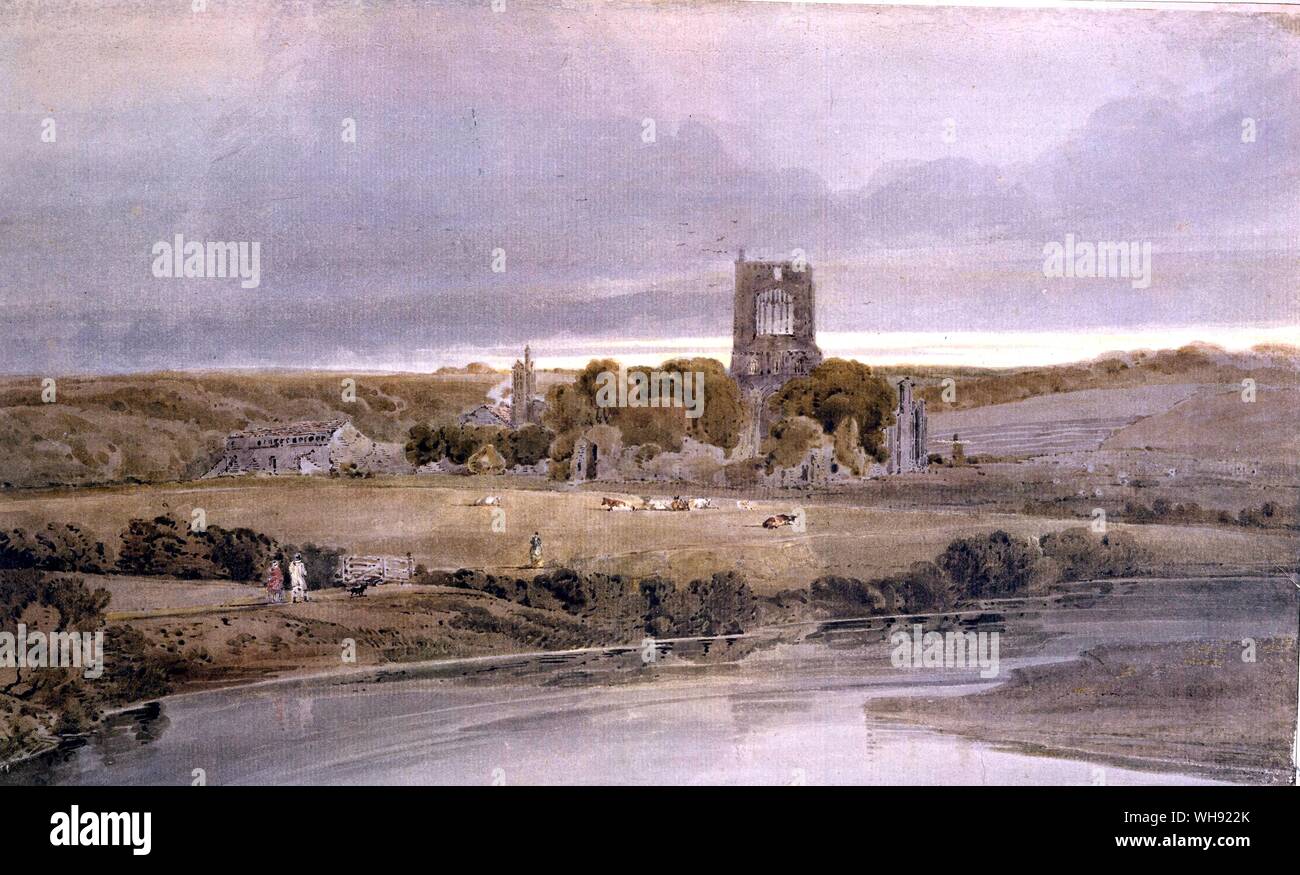Kirkstall Abbey Yorkshire - 1801. by Thomas Girtin. V & A. As young men, the friends J.M.W. Turner and Thomas Girtin were employed by Dr Thomas Monro, the physician who tended Cozens after he lost his sanity, to copy drawings by Cozens and other artists. One of Girtin's most spectacular conceptions is Kirkstall Abbey, Yorkshire - Evening, a watercolour of around 1801, based upon sketches of the ruined Cistercian abbey of Kirkstall, near Leeds. Its dramatic lighting, solemn palette and panoramic scale recall earlier Dutch landscapes, while the motif of a church tower at sunset had become a

Image details
Contributor:
Smith Archive / Alamy Stock PhotoImage ID:
WH922KFile size:
25.8 MB (1.1 MB Compressed download)Releases:
Model - no | Property - noDo I need a release?Dimensions:
3864 x 2335 px | 32.7 x 19.8 cm | 12.9 x 7.8 inches | 300dpiDate taken:
28 August 2019Photographer:
Smith ArchiveMore information:
Kirkstall Abbey Yorkshire - 1801. by Thomas Girtin. V & A. As young men, the friends J.M.W. Turner and Thomas Girtin were employed by Dr Thomas Monro, the physician who tended Cozens after he lost his sanity, to copy drawings by Cozens and other artists. One of Girtin's most spectacular conceptions is Kirkstall Abbey, Yorkshire - Evening, a watercolour of around 1801, based upon sketches of the ruined Cistercian abbey of Kirkstall, near Leeds. Its dramatic lighting, solemn palette and panoramic scale recall earlier Dutch landscapes, while the motif of a church tower at sunset had become a commonplace since the publication in 1751 of Gray's most celebrated work, the Elegy Written in a Country Churchyard. The powerful impact of this composition is achieved by the contrast between the sombre palette and simple forms and the vivid streak of sunset light between the horizon and the clouds.. Thomas Girtin (18 February 1775 - 9 November 1802), was an English painter and etcher, who played a key role in establishing watercolour as a reputable art form. He was born in Southwark, London, the son of a well-to-do brushmaker of Huguenot descent. Girtin learnt drawing as a boy, and was apprenticed to Edward Dayes (1763-1804), a topographical watercolourist. While still a youth Girtin became friends with J. M. W. Turner and two teenagers were employed to colour prints with watercolour, which was the main use of the medium at that time. Girtin exhibited at the Royal Academy from 1794. His architectural and topographical sketches and drawing soon established his reputation, his use of watercolour for landscapes being such as to give him the credit of having created modern water-colour painting..